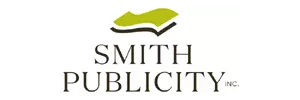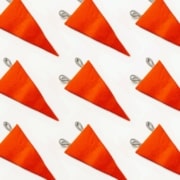The Three Truths of Book Design
By George Stevens, of G Sharp Design, LLC
It’s common for authors to be anxious about how their manuscript will transform into a beautifully jacketed and typeset book. What should be on the cover? What’s the best color scheme for my market? What typeface and point size should be used for the book’s text?
The answers to these questions are all a function of a more pressing issue: hiring the right book design resource. Addressing this need should be the first priority, because a great book designer will work through the brass tacks decisions with you. Authors who mindfully approach the search for a book design partner will be rewarded with lasting partnership, a satisfying experience, and an enduring result. In other words, value. 
Hiring the right resource begins with understanding a few basic concepts about book design, and the people who do it. What follows are three truths of book design which the will help refine your search for the ideal design resource:
- Design is a process, not a product.
- Book design is a specialty.
- Beware of “options”.
1. Design is a Process, not a Product
This is a fundamental principle that must be understood before you begin your search. When you pay the rate of a book designer, you are not “buying” the book cover. You are investing in the process that results in a book cover.
As you’re vetting designers, dig into their process and see how it conforms with the way you prefer to collaborate. For example, do you value autonomy in a designer? Or would you prefer someone who checks in with you on a daily basis and briefs you on progress?
There’s no one right answer, only what’s right for you. Your ideal book designer should be fundamentally skilled, but also able to complement your communication style and workflow preferences. This will create the optimal experience for you, which in turn will result in the best outcome.
“You get what you pay for,” applies to book design as much as it applies to anything. By reframing “what you pay for” as a process involving a skilled specialist—not a rectangular graphic—it could inform how you think about your budget.
2. Book Design is a Specialty
Not all doctors are pediatricians.
Not all musicians are jazz pianists.
Not all graphic designers are book designers.
Each of these is an example of a specialist within a broader field. Book designers have a refined understanding of the technical components of book layout and composition. They follow trends, understand how to interface with book printers, and can anticipate common obstacles.
Another plus for hiring a book design specialist is that they’ll come equipped with a stable of resources to whom they can point you. Need a proofreader? An illustrator? A PR expert? A publishing coordinator? Chances are, a tenured book designer knows someone and can provide a quality referral. The value of a great book designer extends well beyond their core abilities.
As is the case in any industry, specialists are going to command a higher rate. But the understanding is that you’ll receive commensurate value, both during the process and beyond it. Remember, your book is not an ephemeral asset with a short lifespan. If you intend to leverage it as a prestige marketing tool, or use it to position yourself as a trusted resource in your field, investing in a book design specialist could pay for itself many times over.
3. Beware of Options
As the saying goes, “The best of a set of bad options is still a bad option.”
My rule of thumb: beware of any resource, be it an individual or an agency, that places the burden on you to decide what great design is, by way of asking you to choose from options.
“Options” is a bad word in design. It suggests a closed system. Instead, you should strive for a collaboration that doesn’t put unreasonable restrictions on iteration and development. The winning solution is one at which you should confidently and mutually arrive. Steady progress is important, but you shouldn’t feel pressured to settle.
Seek out a designer who will spend time learning about you, your message, your voice, and your market before initiating the design phase. Then, they should present you with concepts that can be iterated upon as the process continues.
(While it may seem paradoxical, I believe the more you invest, the fewer concepts you’ll see. In my experience, authors prefer a small selection of focused ideas over an avalanche of half-baked mockups.)
Whatever your preference, know that different designers will take a different approach. Some may start with one concept, some may show you four or five. Again, there’s no wrong answer, but it behooves you to dig into each candidate’s process before you hire them so that you can evaluate your comfort level with these factors. This way, you’ll be sure you’re getting more than just “options.”
Taking It From Here
As you consider the best design resource for your book project, embrace these three concepts to weed out weak candidates. When vetting resources, look for red flags such as:
- inflexibility from a process and communication standpoint
- a lack of specialized knowledge and experience
- restrictive language such as “2 options and 1 round of revisions.”
Each of these factors speaks to a design resource that will not provide the depth of service that yields great results.
One final bit of advice: No matter how robust a search you’re prepared to conduct, you must take your search further than a simple portfolio review. Sample work is important, but it’s the baseline of evaluation. If you like what you see in a design portfolio, you should then measure that resource against the Three Truths:
- Get a sense of how they conduct a design project. Have them walk you through their process.
- Learn about their experience and philosophy when it comes to book design.
- Be sure they allow for iteration and exploration of ideas as the design evolves.
Let me close by acknowledging the elephant in the room: most of my advice in this piece suggests that you should not skimp on book design. “Of course a book designer would say that,” you may be thinking.
Admittedly, I do subscribe to the notion that cheap design gets you cheap design. But this piece is not about encouraging you to spend, spend, spend. More money is not a magic bullet. Just because one design resource is charging 10x the rate of another does not automatically make them that much better.
My point is that it’s incumbent upon the author to gain an understanding of a designer’s value before agreeing to work with them. Just as you shouldn’t default to the quick fix or cheapest option, don’t assume that a designer who charges prestige rates is automatically the best choice.
By conducting your search with these Three Truths in mind, you’ll hone in on a resource that provides the balance of cost and value that is unique to your project.
–
George Stevens is an award-winning book designer with more than 15 years experience. He’s designed hundreds of books in the business / self-help / motivation space. He is the founder and sole operator of G Sharp Design, LLC, providing book design services to authors and publishers all around the world. He lives in Charleston, SC with his wife and daughter. Learn more about him at www.gsharpmajor.com.





